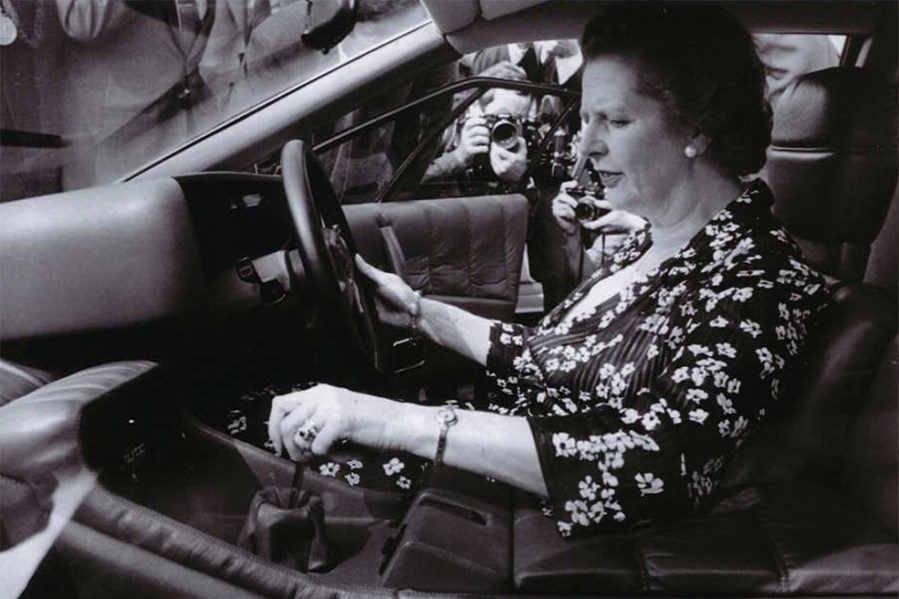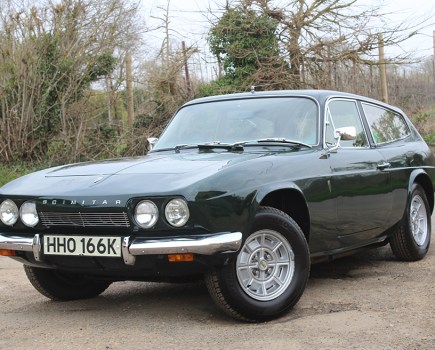As new Prime Minister Sir Keir Starmer travels by Audi to Downing Street, we chart the history of the UK government’s cars
Over the years, the official cars of government ministers have changed dramatically as the UK car industry has also changed. Recent reports of the collapse of the traditional ‘Buy British’ approach to official transport has caused a minor stir, but it’s not the first time the government has looked outwith the UK for at least some of its cars. As the new Prime Minister Sir Keir Starmer enters office – and the back seat of an Audi A8 – we’ve taken a look back at the history of ministerial cars since the second world war to get some context.
A government car service had existed before and during the second world war as part of the war effort, with vehicles on hand to whisk ministers across London to impromptu cabinet meetings in an age when not everyone – even the titled wealthy types who generally made up the cabinet at that time – had a personal car. In 1952 the service was formally renamed as the Government Car Service and Churchill, keen to show a willingness to economise and improve public sector efficiency, saw to it that only the Prime Minister, the Foreign Secretary and Home Secretary were allocated full-time cars and drivers. All others had to draw their cars from a pool, which wasn’t quite as fancy as the Humber Pullmans used by the PM, being generally smaller Wolseleys.
By the early 50s, car ownership had become more widespread and an official car was seen as essential to a more efficient government. By this time, the perk of an official car had been widened to include all cabinet ministers and other ministers in charge of departments, with some 37 official cars in total. An early echo of modern sentiment was apparent in 1951 though when the head of the Civil Service, Edward Bridges suggested that the Humbers should be replaced with more efficient cars, leaving the limos for the cabinet ministers only.
This became rather more pressing with the advent of the Suez Crisis in 1956, which saw the return of fuel rationing for the first time since the war and saw those Humbers replaced by rather less thirsty Wolseley 18s. All, that is, except for the Ministers who were under police protection who continued to enjoy the protection of the armoured Humbers.
The 1960s saw the adoption of the Rover P5 as the ministerial car of choice, the car offering an ideal combination of class and understatement. A Rolls or Bentley was clearly too flamboyant for a Prime Minister wanting to win the nation’s approval, while the sporty Jaguars were perhaps not stately enough.

A black Rover P5 3-litre, similar to that used by a number of Prime Ministers including Harold Wilson and Margaret Thatcher
Harold Wilson was the first Prime Minister to enjoy the P5, his 3-Litre reportedly incorporating a special enlarged ashtray for his ever-present pipe, but subsequent Prime Ministers including Edward Heath, James Callaghan and Margaret Thatcher had a rather more spirited drive thanks to the adoption of the ex-Buick V8. The sight of the black P5 sweeping away from Downing Street was as evocative of British politics as De Gaulle’s DS Pallas was of France.
In 1973 the country was in the grip of another fuel crisis, this time inspired by OPEC and the big Ministerial cars were seen as inappropriate when average motorists were queueing for fuel, meaning the spotlight was on economy once again. Indeed, several of the bigger cars were taken out of service and replaced with Minis. At the same time however, the increased terrorist threat from organisations like the IRA had become more of an issue, meaning that the big armoured saloons were needed more than ever.
Despite the economic and social pressures to downsize though, government was clearly looking after its own and it was Edward Heath during his term in office who extended the right to an official car and driver to the leader of the opposition – at the time Harold Wilson – most likely knowing that in the wake of growing industrial unrest during his term in office he would soon find himself in that position. And sure enough, he was replaced by Wilson and no doubt commended himself for having provided the opposition leader with an official car. Not that it would last: shortly afterwards, Margaret Thatcher (pictured above sampling the interior of the Lotus Esprit Turbo) challenged for the leadership of the Conservative Party and took up residence in the back of the P5.
Ironically, Wilson’s Rover couldn’t be supplied initially owing to strike action at the factory as a part of the general industrial strife evident at the time, which meant that he had to make do with a five-year-old Vanden Plas Princess. It was that same climate of industrial unrest which would later bring down the Heath government.
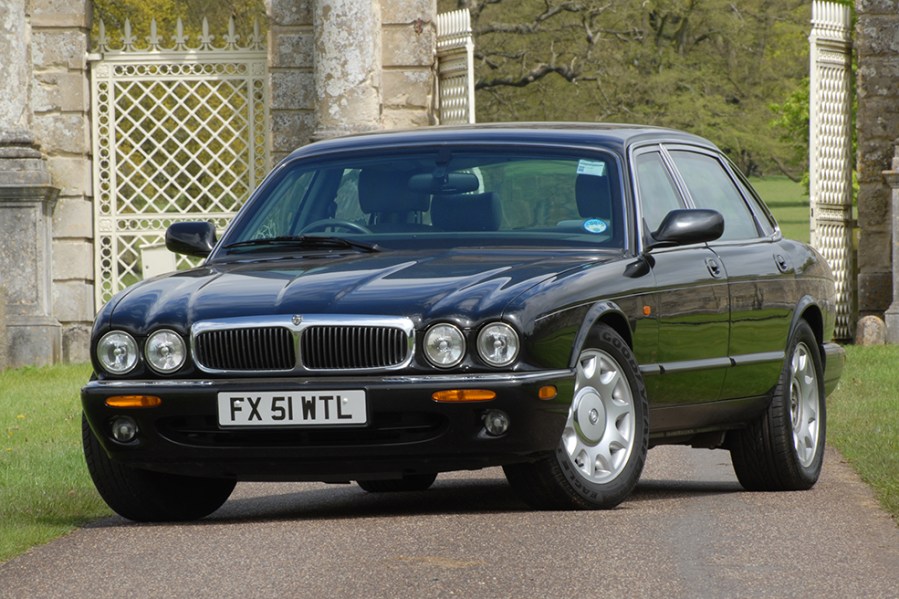
An armoured Jaguar XJ used by Tony Blair – designed to survive three direct shots from a military rifle bullet at 10 metres and featuring an oxygen system to protect against gas attacks
By the mid 70s, the security issues had become ever more pressing, with the decision taken as early as 1972 that the Prime Minister should use an armoured vehicle for all trips and in 1975 it was Wilson as Prime Minister who suggested that even former cabinet ministers should be afforded the protection of an official car for sercurity reasons. The assassination of Airey Neave by a car bomb in the House Of Commons in 1979 reinforced that belief: Neave was driving his own Vauxhall Cavalier which lacked the armour protection of the government Rovers. From this point, ministers were given the free use of their government cars even for personal use as security became more pressing than budgetary considerations.
Meanwhile, in an attempt to improve security, the ministerial cars were no longer all black and were issued with standard registration numbers rather than the personalised plates which had previously been used.
Just a few weeks later, Margaret Thatcher swept to victory in the General Election and arrived at Downing Street in style in the back of the much-loved Rover P5B. It’s been suggested – although not confirmed – that the Government Car Service acquired a batch of the last P5s to be produced and mothballed them for future use, bringing them out of storage as required over the next decade and certainly this explains why the official Rovers still looked good into the 80s.
Curiously, Thatcher never seemed to embrace the P6, perhaps because it was rather smaller inside, or the SD1 – although its reliability was of course in question at times and its hatchback style was maybe just too practical. The P5 couldn’t be used forever though and it was Thatcher who is credited with switching from Rover to Jaguar, first using a Series III Daimler Double Six and then the XJ40 and the PM has been seen in Jaguars ever since.
If Neave’s assasination was a warning, the 1984 bombing of the Conservative Party conference in Brighton was a real wake-up call to the realities of security and it was suggested that police drivers whould be responsible for chauffeuring the Prime Minister – something which eventually happened during the Blair years.
There was an explicit ‘Buy British’ policy at work in the Government Car Service during this era and when Keith Joseph as Education Secretary emerged as a critic of extravagant public spending, he put his money where his mouth was and downsized in 1985 from his Rover SD1… to an Austin Ambassador.
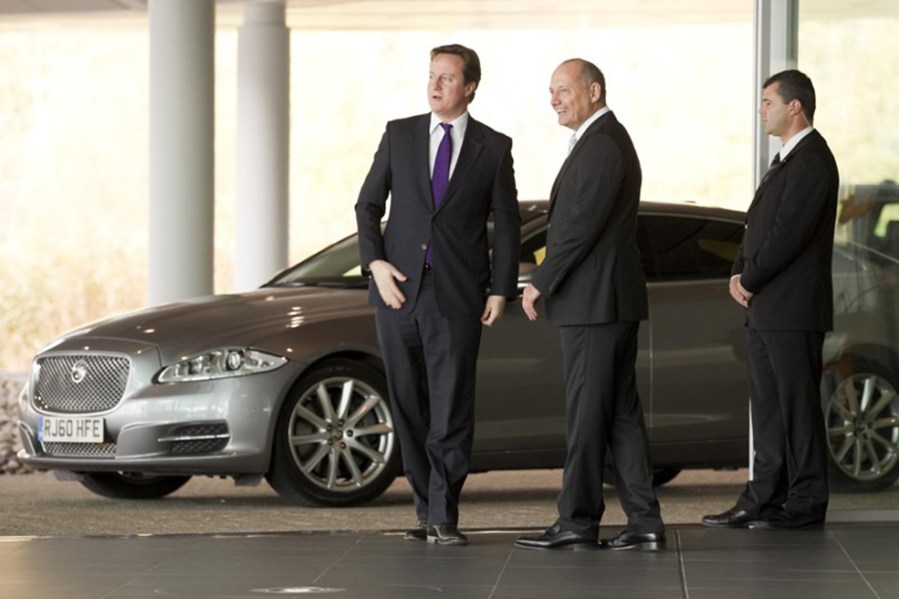
David Cameron visits the McLaren factory in his Jaguar XJ Sentinel
During the era when BL was under state ownership, the government cars were almost exclusively from the BL stable. That gave a choice of Jaguars and Rovers of course, but when Jaguar became independent once more in 1984, that policy became a double-edged sword: in his book The Outer Cabinet chronicling the history of the Government Car Service, Geoffrey Dudley points out that the unreliability of Rover products during this era often made them more costly to operate than the more expensive Jaguars.
Despite this, the Rover 800 soon became a familiar sight in Downing Street and by 1993, the formal list was that Cabinet Ministers and ex-Prime Ministers were entitled to a Rover Sterling, a Rover 827 or any other 800-series model, while Ministers of State were a few rungs down, entitled only to a Rover 416. Or if they knew their stuff and baulked at the revised Honda Concerto, they could specify an Montego 2.0, or 2-litre Mondeo or Cavalier… except for Michael Heseltine, who apparently used his own limo anyway.
With the demise of the Rover 800, the Rover 75 was eventually adopted to take its place, although the smaller dimensions of the newer car apparently was an important factor in the development of the long-wheelbase version of the 75.
While clearly the Prime Minister and the cabinet couldn’t be seen to drive anything but a British marque, the emergence of foreign makers’ manufacturing plants in the UK gradually saw the introduction of cars like the Nissan Primera into the government fleet, but into the new millennium even the ‘Buy British’ policy started to take a back seat to environmental pressures, which is why the Toyota Prius was a familiar sight when a cabinet minister was pictured on official travel.
Not that you’d expect David Cameron to be driving a Japanese hybrid: he continues the proud tradition started by Margaret Thatcher and travelled by Jaguar, as did Tony Blair before him, and Teresa May and Boris Johnson afterwards – although these were often supplemented by Range Rovers. In the case of the Jaguars, they’re factory-supplied Jaguar Sentinel XJs armoured to B7 level, one of the highest protection ratings for a regular car.
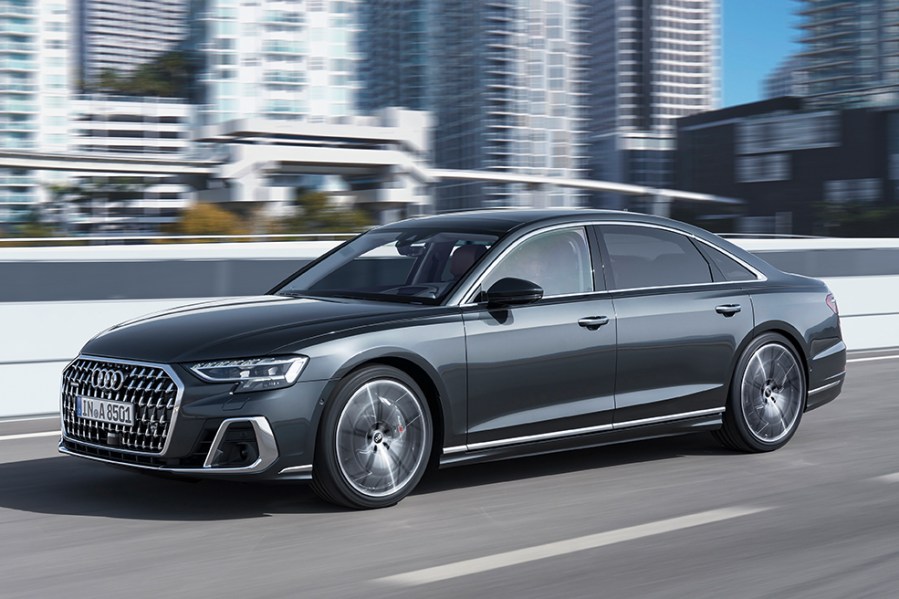
An Audi A8 L Security – the car that has replaced the Jaguar XJ as the PM’s primary transport
However, the Jaguar XJ is no longer in production and as PM Liz Truss entered office in 2022, the Metropolitan Police replaced some of its British-built cars with a fleet of armoured Audi A8 limousines. It’s not clear if these will remain a permanent fixture outside Number 10 or simply a stop-gap before a British-built alternative becomes available. When asked at the final leadership hustings at Wembley, Truss stated that car choice was “a decision for the police”, but also confirmed that she would “look into this issue in more detail”. Of course, she didn’t get much chance to do that in her infamously short tenure. We reckon an armoured version of the latest plug-in hybrid Range Rover would do the job very nicely indeed if Sir Keir Starmer fancies a more patriotic change.
Of course, Starmer won’t get to experience his new wheels from the driving seat: British Prime Ministers haven’t been permitted to drive themselves around since the 50s. Margaret Thatcher did manage to buck the trend with a drive in Colin Chapman’s Lotus Esprit Turbo in 1981 (see our main image), albeit on official business on a visit to the Lotus factory in Norfolk.

